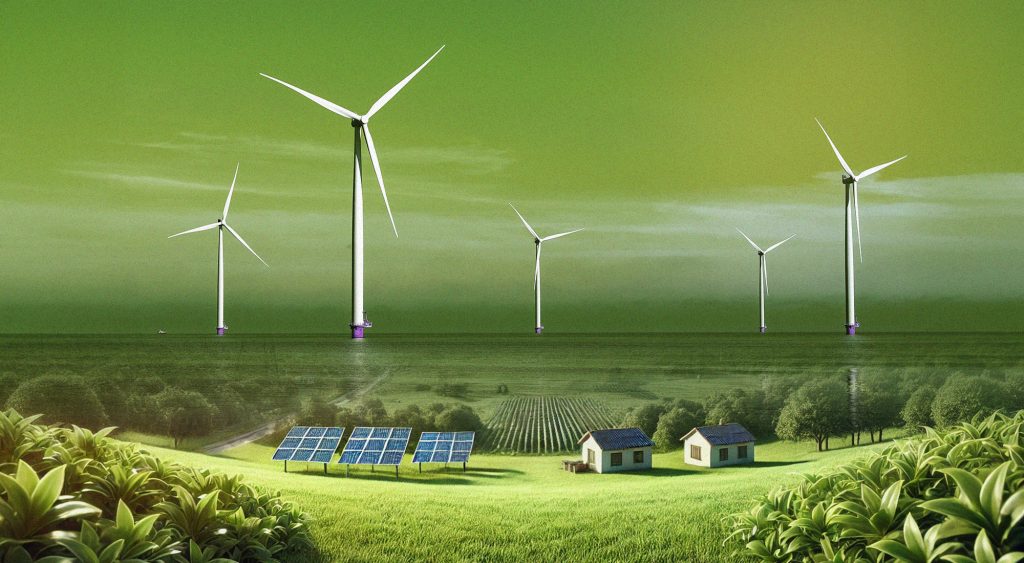A powerful shift is underway in consumer behavior: people are increasingly paying extra for sustainable products and brands that reflect their values. From fashion to finance, this “green premium” trend is driving innovation, reshaping corporate strategies, and creating vast new market opportunities—especially among younger, wealthier audiences.
A Market That’s Paying for Meaning
In the past, pricing was king. Today, purpose is a powerful currency.
From Tesla buyers to oat milk drinkers, millions of consumers across the globe are no longer just purchasing based on utility or cost—they’re buying into stories, ethics, and environmental impact.
According to a 2024 McKinsey consumer report, 67% of global consumers say they’re willing to pay a premium for brands that demonstrate sustainable practices and social responsibility. Among Gen Z and millennials, that number jumps to 83%.
This isn’t just about climate. It’s about conscious capitalism—and it’s quickly becoming a dominant force in business.
What Is the “Green Premium”?
The “green premium” refers to the extra amount a consumer is willing to pay for a product or service that is environmentally friendly or ethically produced.
Think:
$6 for a recyclable shampoo bar vs. $3 for a plastic bottle
Paying more for carbon-neutral flights
Supporting fashion brands that use organic cotton and fair-trade labor
This premium isn’t just tolerated—it’s increasingly expected. Brands that fail to offer sustainable options risk losing relevance.
Real-World Examples of the Green Premium at Work
Patagonia: The outdoor apparel brand saw a 25% revenue increase in 2024 after expanding its recycled product line and emphasizing repair culture. Customers happily pay more for items designed to last—and aligned with climate values.
Beyond Meat and Impossible Foods: Though priced higher than traditional meat, these companies grew 15% year-over-year in a flat meat market. Consumers are choosing plant-based alternatives not just for health, but for climate action.
Apple: By highlighting its carbon-neutral factories and 100% recycled aluminum in product lines, Apple maintains premium pricing—while cementing loyalty from eco-conscious buyers.
Luxury Real Estate: Sustainable “green homes” are now selling up to 12% faster and for 6% more in high-income markets, according to Zillow (2024).
The Psychology Behind the Premium
At its core, the green premium is about identity and values.
Today’s consumers—especially younger generations—see purchasing as an extension of their beliefs. They’re not just buying shoes or soap; they’re making a statement about who they are and what they stand for.
This aligns with the “post-materialist mindset”: prioritizing meaning, ethics, and global consciousness over just price and convenience.
The Data Doesn’t Lie
Sales of ethical and sustainable products grew 5x faster than conventional products in the U.S. between 2015–2023.
74% of consumers say they would boycott a brand they perceive as environmentally irresponsible.
On average, shoppers are willing to pay 9–20% more for sustainable alternatives.
In categories like fashion, travel, and tech, green premiums are now factored into pricing strategy—not as exceptions, but as norms.
The Business Opportunity: Green Isn’t Just Good—It’s Profitable
Forward-thinking businesses are now designing sustainability into their core business models, not just for ethics but for economic advantage.
Why it pays off:
Brand Loyalty: Sustainable brands outperform peers in customer retention.
Higher Margins: Consumers expect to pay more—reducing price pressure.
Investor Appeal: ESG (Environmental, Social, Governance) investments are growing rapidly, with trillions flowing into ethical funds.
Talent Attraction: Top young professionals increasingly prefer to work for companies with clear environmental missions.
Challenges and Risks
But green premiums are not a guaranteed win. Several pitfalls remain:
Greenwashing: Falsely claiming sustainability can backfire with reputational and legal consequences.
Affordability Gaps: Not all consumers can pay the premium, raising concerns over sustainability becoming an elite choice.
Supply Chain Complexity: Truly ethical sourcing requires deep auditing and commitment—not just marketing.
Smart brands are navigating these by being radically transparent, authentic, and science-backed.
The Future: Customizing Green for Every Wallet
As production costs drop and regulations tighten, sustainability will become cheaper, mainstream, and eventually… expected.
Walmart is working on low-cost zero-waste packaging.
IKEA now offers solar panels and circular furniture models.
Airlines are testing algae-based fuels to reduce costs and emissions.
In time, green products won’t carry a premium—they’ll be the standard.
Final Thoughts
The rise of the green premium reflects a world in transformation. For consumers, it’s about impact. For businesses, it’s about differentiation and growth. For society, it’s a shift toward a more conscious, climate-aware economy.
As values and capitalism converge, the companies that lead with sustainability—not just as a feature, but as a foundation—will not only survive but thrive.
Source: McKinsey & Company 2024 Consumer Sustainability Report; Harvard Business Review (2024); NielsenIQ Ethical Shopping Index; Forbes Business Sustainability Outlook Q1 2025.

